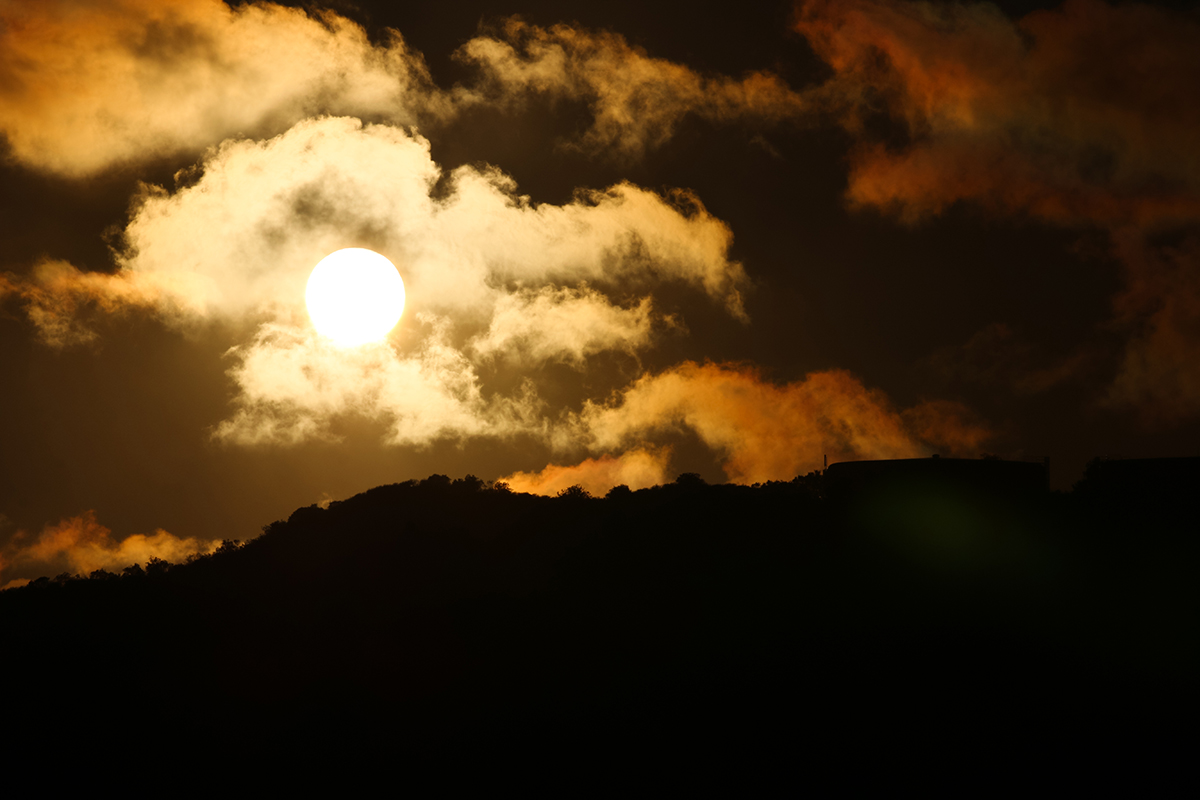California heat waves break records, set dangerous precedent

June 2021 was the warmest June on average in California’s recorded history, according to data from the National Oceanic and Atmospheric Administration. The increasingly frequent and extreme heat waves have severe consequences for both human and environmental health. (David Rimer/Assistant Photo editor)
California has experienced a series of heat waves this summer, with record-breaking temperatures causing dangerous levels of heat exposure.
Heat waves kill more Americans than all other weather-related disasters, with more than 600 people dying every year in the United States because of extreme heat, according to the Centers for Disease Control and Prevention. Hundreds of people died in early July after a heat wave hit the Pacific Northwest.
Even with the large reported numbers of heat-related deaths and illnesses, these statistics typically underestimate the toll that heat takes on people, said V. Kelly Turner, an assistant professor of urban planning and geography. It is difficult to attribute deaths to heat because heat-related illnesses have a gradual onset and affect all areas of the body, she said.
Heat waves have disproportionately impacted Southern California, with especially hot temperatures and the region warming more than the rest of the state over the past century, according to the Environmental Protection Agency.
The growing number of heat waves affects UCLA and its students – whether it is the increased risk of wildfires or more difficulty in learning. For example, UCLA’s campus is located near high fire hazard zones, according to data from the California Department of Forestry and Fire Protection. Students have been impacted by fires, including when UCLA administrators canceled classes when the 2019 Getty Fire spread less than two miles from campus.
In addition to lost class time after cancellations, heat waves bring additional educational challenges, according to a 2020 study co-authored by R. Jisung Park, an assistant professor of public policy. The researchers looked at 58 countries and more than 12,000 U.S. school districts and found that students had poorer educational outcomes – measured by standardized tests scores – when exposed to more hot days.
High temperatures also result in a number of other distresses that initially may not be clear – including emotional, cognitive and physical effects, said Bharat Venkat, an assistant professor of society and genetics and the director of the UCLA Heat Lab.
“More or less, every system of the body is affected by heat,” Venkat said. “You could have things like asthma or heart disease that are all rendered more severe by extreme heat.”
Heat may have significant effects on pregnant women and their newborns, according to a December 2019 study led by Alan Barreca, an associate professor of environment and sustainability. The study found that exposure to high heat may lead to premature births.
In the workplace, heat exposure also increases the frequency of accidents and work-related injuries, said Nora Pankratz, a postdoctoral research fellow at the Luskin School of Public Affairs.
Those who work in outdoor professions, such as in agriculture or construction, are at higher risk for injuries during the extreme heat, Pankratz said. The researchers found that employees with indoor jobs, such as manufacturing or warehousing, also appear to experience an increased risk for workplace injuries on hotter days, she said.
The number of heat-related injuries dropped after California implemented heat illness protection standards that aimed to protect workers, Pankratz added. The standards included requiring shade, rest breaks and water on hot days.
California policymakers are proposing additional policies and programs to reduce heat-related challenges, Turner said. For example, Assembly Bill 585, a bill working its way through the California Legislature, would implement a set of incentives for cities to take action on excessive heat and outlines ways to coordinate state and local response. The bill would also establish a fund to implement mitigation strategies, like using cooler building materials and designing more public areas of shade.
In addition to long-term solutions that aim to stem the effects of climate change, Venkat said that communities can combat the effects of heat by rethinking urban design. Neighborhoods with fewer trees and more asphalt have increased exposure to heat, which disproportionately impacts lower-income populations.
At a community level, excessive heat creates inequities for people living in these urban environments that become hotter or live in facilities that do not have air conditioning, Turner said. In addition, inequalities in health complications from heat are present because some people are physiologically more vulnerable, such as those who are older or very young, Turner said.
In many cases, air conditioning is a life-saving resource. A study co-authored by Barreca found that the introduction of air conditioning has annually prevented thousands of premature deaths on hot days. However, it can often be too expensive for many living in low-income households, Barreca said in an emailed statement.
Barreca said communities can potentially resolve this inequity by implementing automatic discounts on energy bills for low-income households when the weather is very hot. Another long-term solution would be to construct more affordable housing near the coast where the climate is cooler, Barreca added.
In addition to being physiologically harmful to humans, heat waves increase the risk for wildfires and damage ecosystems, said Morgan Tingley, an associate professor of ecology and evolutionary biology.
Extreme heat exacerbates the ongoing drought California has faced in the past year, which increases the number of wildfires and extreme megafires, Tingley said. Megafires burn differently and result in different post-fire ecosystems than small fires do, Tingley said. Many species that normally benefit from wildfires do not benefit as much – or at all – from these megafires, he added.
As California continues to experience heat waves and droughts, fires will become bigger and have increasingly negative effects on biodiversity, Tingley said.
Wildfire season also tends to start earlier and end later each year, as climate change has caused increased temperatures and more intense dry seasons. Combined, these factors make forests more susceptible to severe wildfires, according to CAL FIRE.
[Related: Campus Queries: What is the impact of wildfires on wildlife in California?]
In 2020, more than 4.2 million acres were burned as a result of nearly 10,000 wildfire incidents, according to CAL FIRE. With more than 4% of the state burning, 2020 was the largest wildfire season recorded in California's modern history.
While heat waves have existed before humans began to affect the climate, the frequency and severity of heat waves are increasing, Tingley said, and these frequent heat waves may become the norm.
“If you just look at this summer, it hasn't just been one heat wave, it's been multiple heat waves back-to-back,” he said. “It's not a heat wave if it is constant – that's just an extremely warm summer, and that's what we're moving towards.”
Pankratz said that raising awareness about the dangers of heat is important in combatting the effects of rising temperatures.
“Both on the policy side and the research, there is much more awareness now of just the need to become more vigilant in terms of not only heat but also the other types of climate hazards,” she said. “That's the first step to make sure that we are going to do our best to live in a warmer world.”




